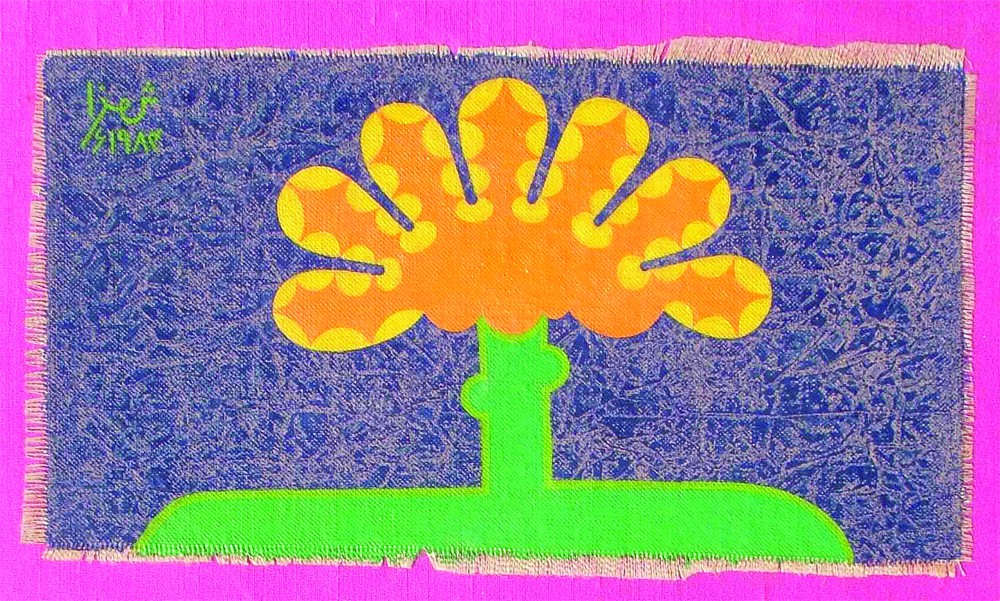

Last Sunday I pulled myself out of the house and went to a nearby hardware store to do a task long overdue -- buy two door handles to be installed in the house. While fixing the handles onto the doors, the handyman looked at the stamp engraved on the handle, laughed and said, "These are manufactured very much here, probably in Choonian, but it says Made in China."
Why do we have to lie about the origin of products manufactured here? But then this is true for a majority of products from Pakistan; we come across fabric that is ‘made in Japan’, blankets from ‘Korea’ and crockery from ‘Italy’. Interestingly, both the sellers and buyers of these goods know the truth or lie behind the claims.
In the field of fine arts, the order gets reversed; here we insist that whatever is created in Pakistan must bear the mark of identity of this soil. Most of the time forgetting that art belongs to a society not to a nation, and that identity is not confined to a country but many other elements formulate and affect the idea of identity. Hence the identity of a creative individual -- of being a man or woman, religious or ethnic minority, political activist, revolutionary, youngster or immigrant can also have significance in shaping his/her work.
In our context, the link with the Mughal era in the form of miniature is a segment of our heritage; as well as the connection with the Islamic tradition of calligraphy holds a valid symbolism.
In fact, the issue of identity surfaces when we have to prove our differences and uniqueness in comparison to others, mainly the Western cultures. For us, the West is an ever-changing entity because it encompasses everything which we don’t like to see here or are not prepared to accept as our own.
Often one hears comments praising the localness in an art work which portrays the indigenous aesthetics in contrast to Western art. It could well be that objects collected for the still life arranged at an artist’s studio may include empty bottles brought from Scotland, crystals manufactured in the Czech Republic, plates picked from France, bananas imported from Indian Punjab and a piece of cloth bought in Bangladesh, all composed on a table that was a copy of a foreign design.
More so, this ‘local’ still life is painted with brushes imported from China, oil paints made in England, and turpentine, linseed oil and other solvents -- all bottled in the UK or the US if one prefers good quality material. These mediums are applied on a surface which is a canvas acquired from Europe or on a hardboard transported from Brazil. The artist is probably someone who likes to converse in English most of the time, dresses in Western clothing, reads world literature and watches Hollywood films and so on.
While the focus remains on the land that belongs to us, the concept and custom of painting a landscape itself was introduced in our surroundings once it gained popularity in Europe and America after the triumph of Realism and Impressionism. In the art produced before the invasion of British rulers, Indian society was not familiar with a genre such as ‘landscape’ and it was only after the English painters rendered local sceneries in watercolours that a new form of art emerged for artists from this region.
At the same time, influences from European art played a pivotal part in defining and determining naturalism in the local aesthetic experience and expression. Actually this attention to landscape was also a new phenomenon in Western societies, as V. S. Naipaul observes that the spread of picture postcards and fascination with ‘scenery’ were the outcome, if not the ploy, of tourist shipping industry.
Here, in criticism about present art forms, one often hears the point of contention that whatever is being produced today by our contemporary artists is mere aping of West, forgetting our own roots. Most of the time, these commentators ignore that what is praised and proclaimed as our indigenous art is also a refined and revised copy of Western pictorial practices; only those were in vogue a century ago in their place of origin. Hence a portrait, landscape or still life made in the manner of 18th, 19th or early 20th century European art is accepted as vernacular art. Whereas a canvas with abstract imagery, an installation, a digital print and a video projection -- no matter their subject matter is -- are considered alien genres.
This kind of criticism does not foresee that after some years -- or a century, these would also be regarded as local art forms -- much like the Persian art of miniature (introduced by Abdus Samad and Mir Sayyid Ali, two masters from Persia who accompanied Humayun in his campaign to regain the throne of Delhi in1555) is accepted as a vernacular tradition.
When we hear a lot about identity and its attachment with our roots, we know this ranting about location is a matter of time. Because art from a certain era is sanctified by a majority of people once that era is gone; and avant-garde is safely converted into convention. On the other hand, it is difficult to accept the current practices from another society into our own culture while surviving in the same period. So we keep resisting in the name of adhering to our roots. Without realising what Amin Maalouf writes in his book of memoir Origins: "Roots burrow into the ground, twist in the mud, and thrive in darkness; they hold trees in captivity…
"Trees are forced into resignation; they need their roots. Men do not. We breathe light and covet the heavens…..we use our feet only to walk. What matters to us are roads."